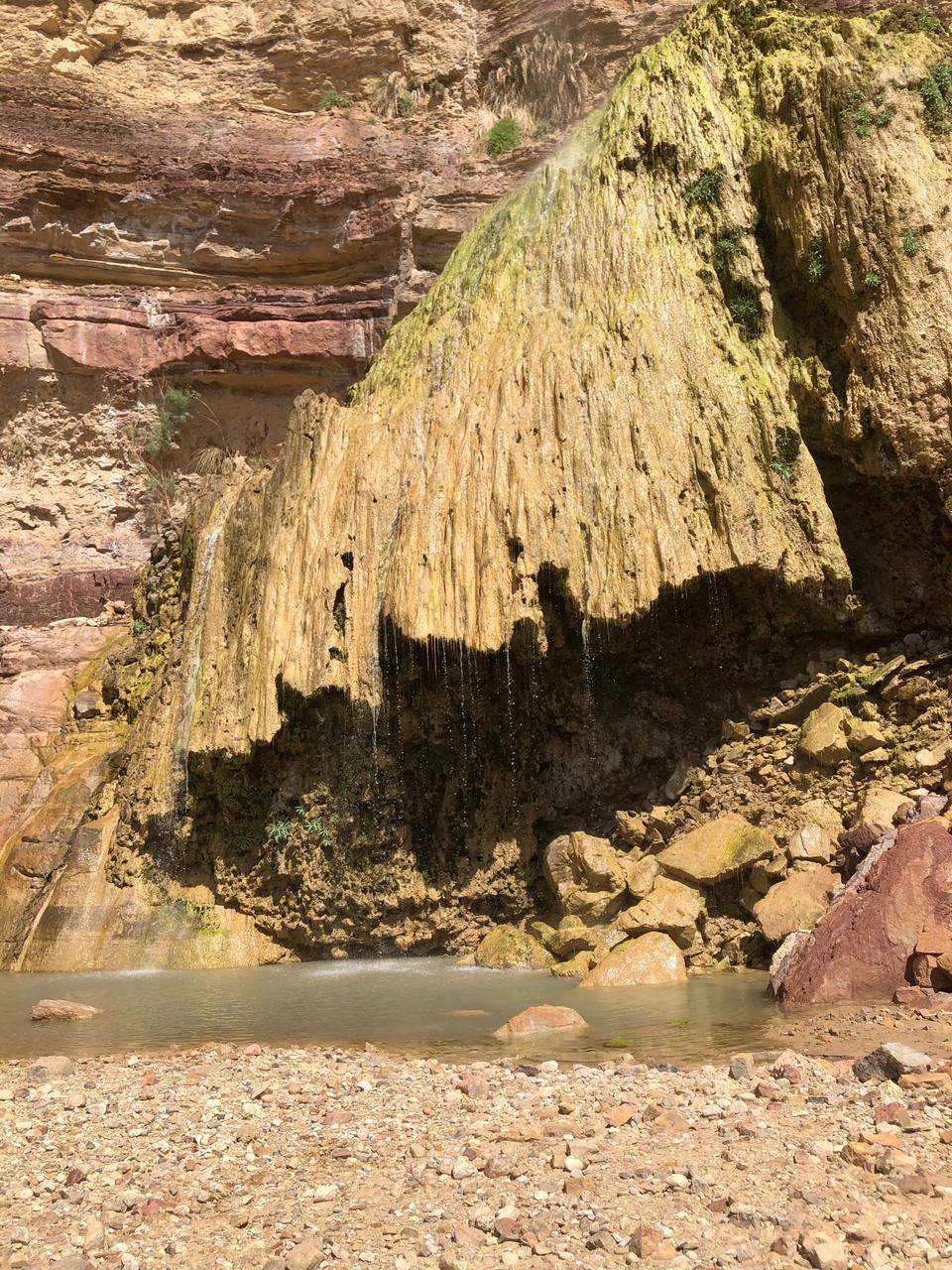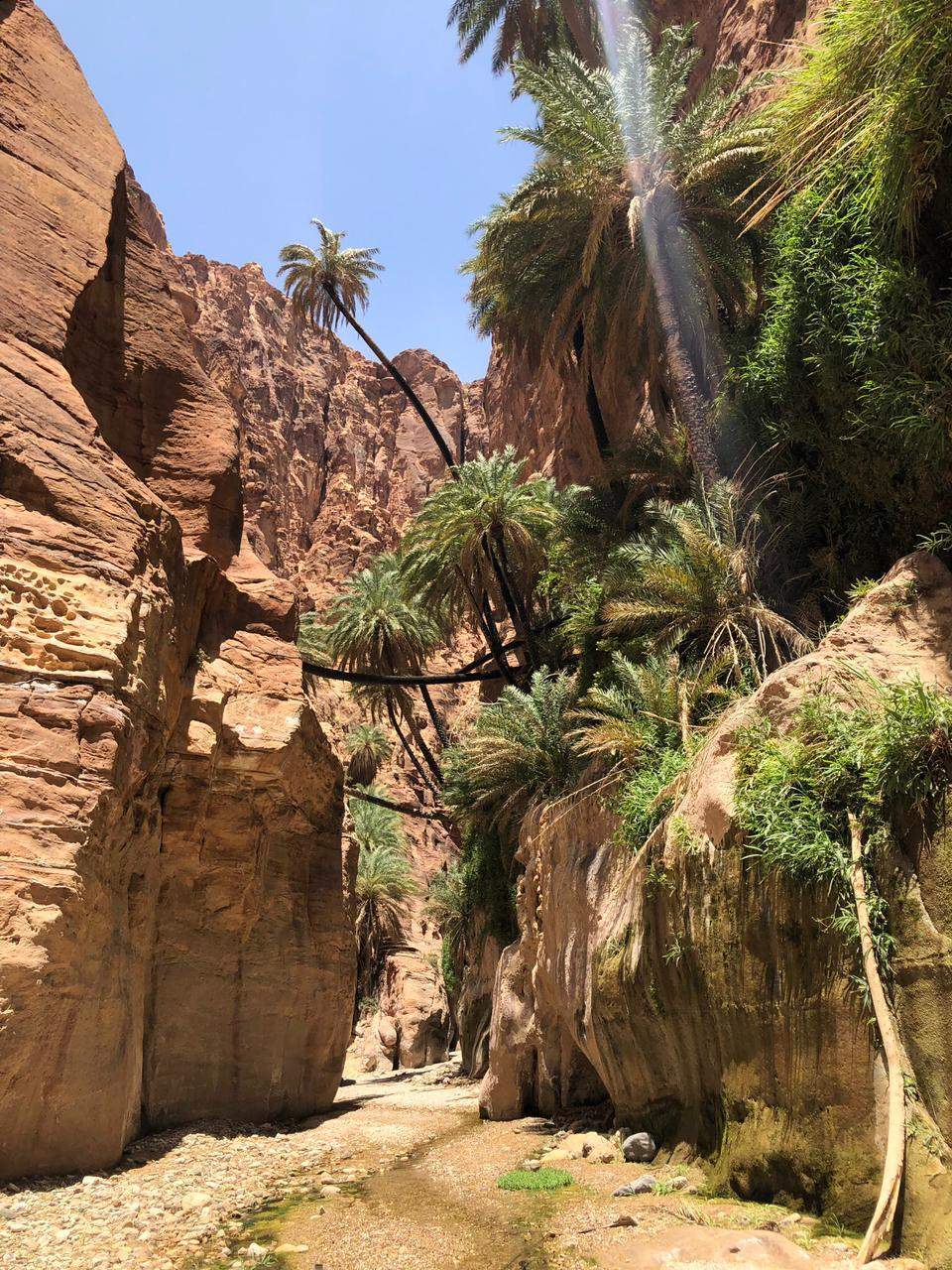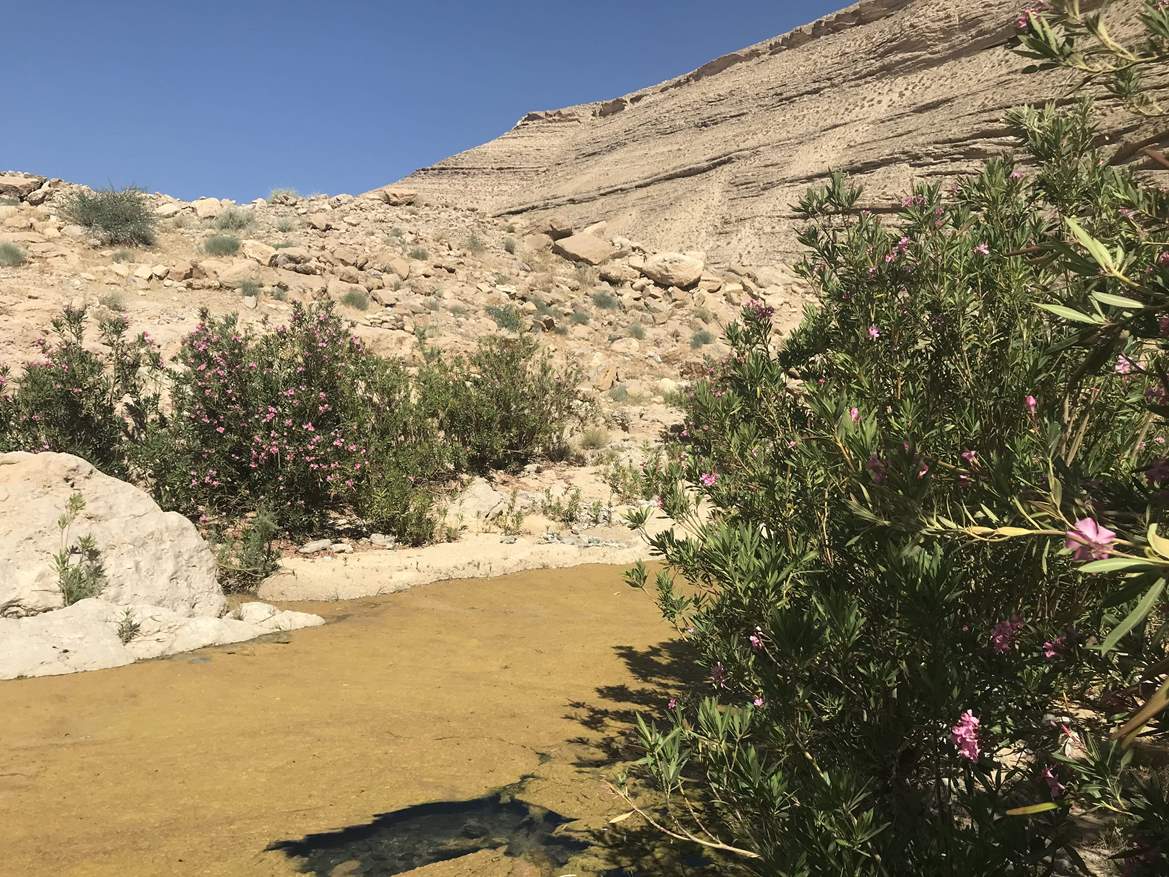AMMAN — Jordan is blessed with diverse landscapes and good weather
all year round, and now that summer is here, it’s the perfect season to enjoy
Jordan’s wadis and hidden waterfalls.
اضافة اعلان
Trekking through Jordan’s canyons means you will walk through sand,
pebbles, rocks, dry land and water, and may need to swim through some areas of
the wadis. Hiking shoes are not a must, but comfortable and heavy-endurance
shoes are highly recommended to ensure that you enjoy the trek and its constantly
changing terrain.
Here is a list of five canyons that can be enjoyed without
technical experience or professional equipment. Nonetheless, it is advisable to
go with or hired local or experienced guide to help navigate the area.
1. Wadi MujibHiking through the lowest nature reserve on earth is not something
you want to miss. This majestic canyon cuts through massive sandstone cliffs that
change color depending on the light’s intensity at different times of the day.
The freshwater streams through the gorge of the canyon and down the
narrow pathways into the Dead Sea. The trek is mainly through water and offers plenty
of chances to swim in the cool, clear waters of Mujib River.
There are several hiking trails that you can choose from, ranging
from one to six hours in length, and “easy” to “extremely difficult” in grade. The
main trail ends at a beautiful mini waterfall that is approximately 2km from
the main entrance of the reserve. Prices depend on the trail and services you
choose, and you can find them published here:
https://www.wildjordan.com.
The RSCN visitor center at the
Mujib Biosphere Reserve is normally
accessed from the Dead Sea Highway, or via Airport Road or the King’s Highway.
 Wadi Mujib (Photo: Duha Fayad/Jordan News)
Wadi Mujib (Photo: Duha Fayad/Jordan News)
2. Wadi HidanWadi Hidan is Jordan’s natural water park and is one of the best
adventures you can have in the Kingdom. The beautiful black basaltic canyon is
full of natural pools, refreshing freshwater, flowing streams, and blooming
pink flowers commonly known as “Dufflah.” The trail offers visitors a chance to
swim through Wadi Hidan’s narrow gorges, climb rocks, jump into freshwater
pools, and slide down slippery natural rockslides.
However, the slides and cliff jumps are optional and trekking
through the wadi does not require previous experience or skill. The wadi is well
equipped with bolts and metal staircases to support visitors, and ropes are
fixed to aided sections that require swimming through the gorges of the canyon.
The main trek is approximately 4km long and is generally rated as “easy”.
Entry fees are $42 per person for Jordanians and almost $50 for tourists,
and include fees for a professional guide, lifejackets, and helmets.
You can get to the RSCN visitor center at Wadi Hidan along the King’s
Highway, near Madaba.
 Wadi Hidan (Photo: Duha Fayad/Jordan News)
Wadi Hidan (Photo: Duha Fayad/Jordan News)
3. Wadi HimaraWadi Himara, named after the red colored cliffs that surround the
Himara valley, is a magnificent canyon rich in vegetation, such as palm trees,
juniper, oleander, reed, and capers near the Dead Sea area.
Wadi Himara is divided into upper and lower sections. The
non-technical trekking trails, known as the “Wadi Himara Palm Trees” and the “Wadi
Himara Waterfall” trails, are in the lower section of the canyon.
The Wadi Himara Palm Trees trail is the main trail and is
approximately 4km long and is rated as easy and suitable for kids and families.
The trek ends at a 4-meter-high waterfall. A fixed rope is there to help you
climb a 4m wall to get to another gushing waterfall hidden amidst beautiful
red, ocher, yellow, and purple rocks.
The longer trek is approximately 10km long. The trail stretches uphill
over a mountain with panoramic views of the Dead Sea and along exposed terrain that
dwindles down to the middle section of the canyon that houses Jordan’s tallest waterfall,
which is 80m. The massive waterfall falls into a freshwater pool with cool
water: a rejuvenating contrast to the Himara area’s arid desert conditions.
Wadi Himara is a 1-hour drive from Amman on the Dead Sea Highway.
You can park your car at the parking lot, opposite the entrance of the wadi.
 Wadi Himara (Photo: Duha Fayad/Jordan News)
Wadi Himara (Photo: Duha Fayad/Jordan News)
4. Wadi Bin HammadIn Karak, there is a gem known as Wadi Bin Hammad. This beautiful
canyon is full of luscious vegetation and dense palm trees that hang from massive
cliffs, keeping the water and trail well shaded and hidden from the heat of the
sun.
The hike starts from the visitor center and takes you through a generally
shallow river that rises at different points of the trek. The hike is easy, although
the terrain is uneven and slippery at some parts.
The trek includes natural hot springs next to the visitor center and
refreshing cold water streams and waterfalls in Wadi Bin Hammad.
Entry fees are JD2 per person for Jordanians, and JD5 per
person for non-Jordanians. Hiring a professional guide is not included as part
of the entrance fee and costs JD20.
Wadi Bin Hammad is 143km away from Amman. You can get there by
taking the Desert Highway to Karak, and then down winding and steep side roads
to the visitor center.
 Wadi Bin Hammad (Photo: Duha Fayad/Jordan News)
5. Wadi Hiba or Wadi Aya (part of the Wadi Al-Salayta)
Wadi Bin Hammad (Photo: Duha Fayad/Jordan News)
5. Wadi Hiba or Wadi Aya (part of the Wadi Al-Salayta)Wadi Hiba or Wadi Aya is part of the larger Wadi Al-Salayta, a
canyon 90km outside of Amman in an area between Madaba and Karak. The wadi is
known as Wadi Arnoun in the Old and New Testaments.
The 3km hike is a generally easy, suitable for kids, and very
popular amongst Jordanians and tourists.
The trek through the dwindling canyon of limestone and blueish
sedimental rock provides numerous natural pools to enjoy and cliffs to
jump from. Jumping off cliffs and sliding into pools is optional and can be
avoided by hiking down adjacent hiking paths on the side of the wadi. But it is
a great adventure and opportunity to experience the best that Jordan’s canyons
and waterfalls can offer.
To get to this wadi, you need to drive 45km towards Madaba on the Desert
Highway. The start of the trek is only accessible through a dirt road using a
4x4.
 Wadi Aya (Photo: Jason Ruffin/Jordan News)
Wadi Aya (Photo: Jason Ruffin/Jordan News)
Read more
lifestyle



